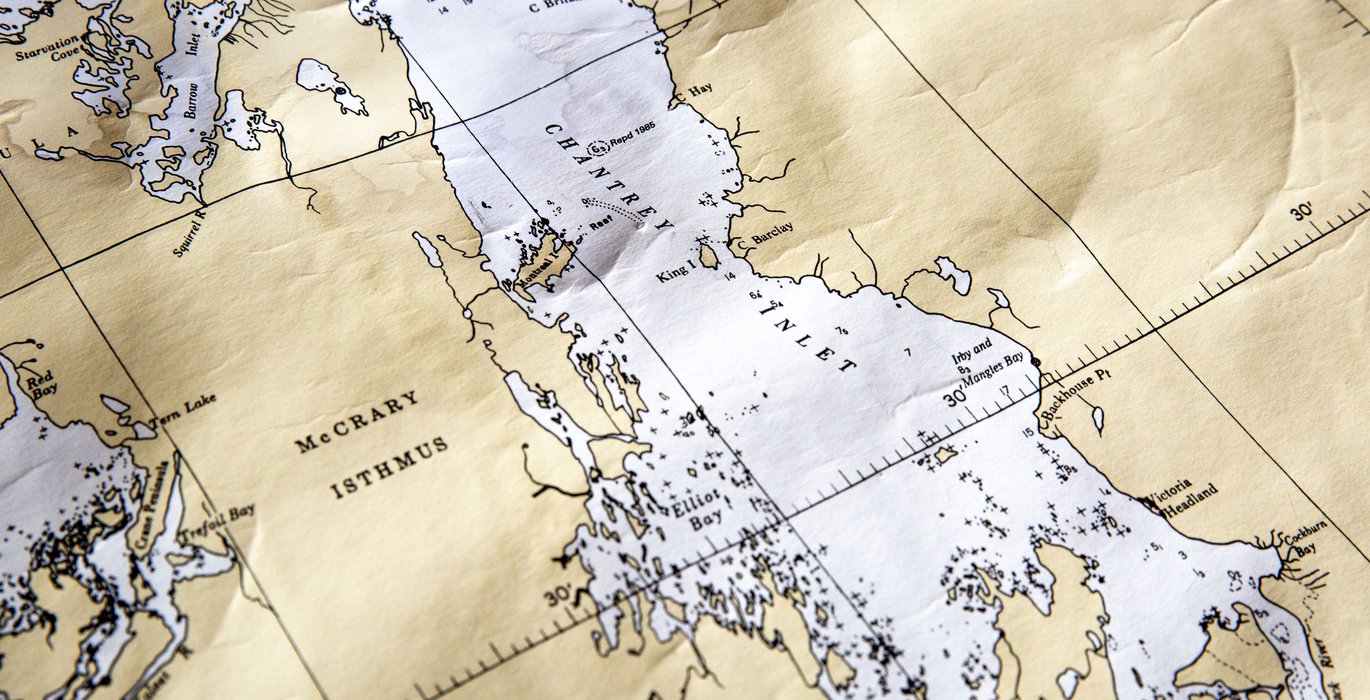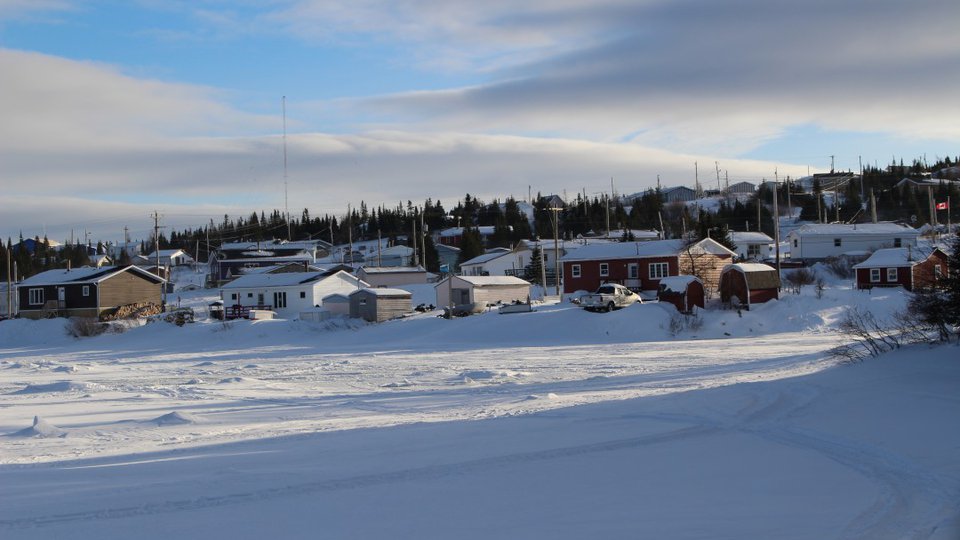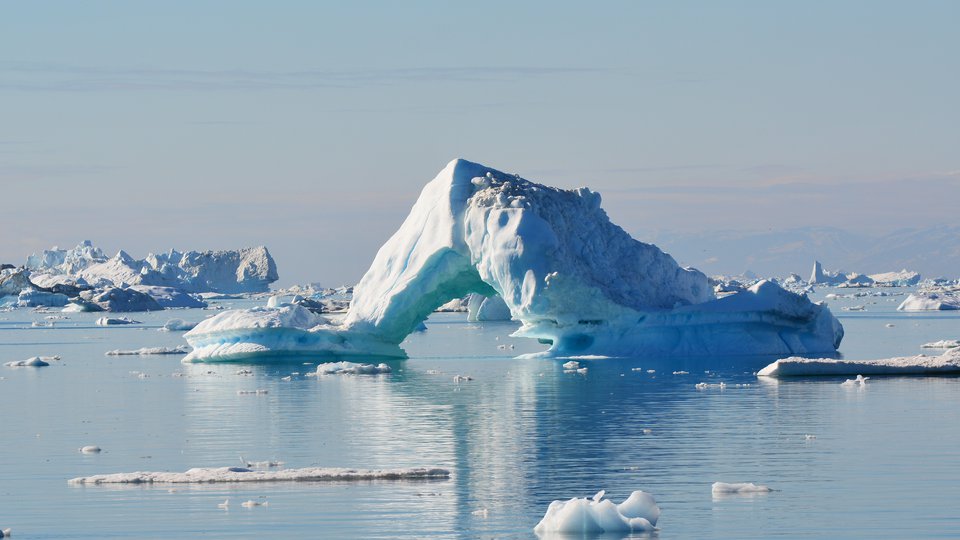
t's September 2016 and we are currently heading North to Gjoa Haven after completing a successful science expedition in Chantrey. This week we found a path in this mostly un-charted region, navigating south along the Eastern side of Chantrey Inlet to about 4 nm from the mouth of Back River, reaching the farthest point we can possibly go late Wednesday night at 9pm. All hands on deck was the mentality as we all focused on finding a safe path. It was slow going as we faced 20 kt winds and swells that made navigating uncharted waters a mental challenge. We launched the Dolphin where Chantrey Inlet narrows between Montreal and King Island, this area has a string of sand bars acting like a maze of gates to the southern basin, we were running out of deep water fast.
To scout the waters and find a path for the Bergmann, Gerry Chidley, Yves Bernard and I found a 10m channel with our little 16 foot skiff “the Dolphin”. Conditions were challenging, building swells with North Westerly winds blowing and charged with the incoming tide. The forecast was calling for snow and rain so the once again the bar was raised. We surfed the waves as we ran down and across the swells, at time we felt like we were competing in a rodeo as the small boat would bounce off wave from one wave to the next. We zagged back and forth using the side scan/chirp sounder and eventually found the right path that would lead the Bergmann to the southern basin.
By Tuesday evening we made it about 3/4 quarters of the way down Chantrey Inlet when weather and setting sun halted dolphin scouting runs at 9pm. We set anchor and decided to catch some rest and wait out the weather Tuesday evening and Wednesday. Winds died down to 15 knots Wednesday evening and Gerry, Yves and I suited up and launched the Dolphin to lead the Bergman 7.4 nm to Lat 67 19.53, Long 095 18.27, the farthest point we can safely navigate with the Bergmann.
Thursday morning Daniel and I jumped in the Dolphin at 6am to scout a path into Back River. 2km from the mouth of the river the water depth disappeared to .5m, we found another maze of shoals and at that point we decided to head back to the Bergmann, picked up the river sampling kits and ctd. Daniel stepped off and Gerry, Yves and Lina stepped aboard. We worked our way back the river. We found shoal after shoal, the Back River was wide and its delta and soft sand spread out to the point were we could not find any water deep enough for the Dolphin. We jump out of the skiff many time to push the boat over shoals, Gerry and Yves grabbed the boat lines over their shoulders and pulled like draft horses, over time and reaching exhaustion it seemed that we were fighting a loosing battle. We spotted a muskox skeleton, half buried in the sand shoal and it was about at that point we decided to take the water samples as we just could not push on further. This is what arctic exploration is all about pushing as far as we can go and knowing when it is time to stop while at the same time thinking of how we can get farther the next year.
On our way back to Bergmann we spotted a waterfall cutting through the sides of granite cliffs just North East of the river mouth, on approach, the river appeared to flow through an ancient glacial valley. We could not resist to land the Dolphin and investigate the water falls. On shore I noticed bear and caribou tracks along the shore line, with heightened excitement we decided to climb the cliffs to investigate further. The water falls were majestic, surrounded by heavy granite boulders, carpeted with green moss. Up river the water would disappear under the granite boulders. Walking in the valley you could hear the water flowing underneath the boulders, an invisible river hidden by the heavy granite. Gerry took to high ground, shotgun in hand and with in no time at all spotted 15 caribou in the distant river valley. The caribou did not stay long as they picked up our scent quickly ran east further inland. Walking further up river we found a river pond and stopped to take a break, sample some water with Kristina’s sampling kit and breathe the crisp air. All around it was an amazing few days, it was time to turn around and make are way back home.
Adrian Schimnowski is the CEO of the Arctic Research Foundation.
This blog post is part of a regular series of dispatches from the field written by Arctic explorers and researchers.





